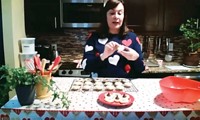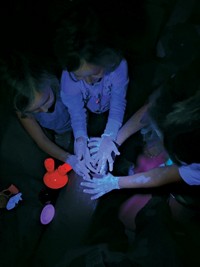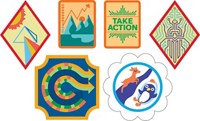Advertisement
Grab your lab coat. Let's get started
Welcome!
Welcome!
Create an account below to get 6 C&EN articles per month, receive newsletters and more - all free.
It seems this is your first time logging in online. Please enter the following information to continue.
As an ACS member you automatically get access to this site. All we need is few more details to create your reading experience.
Not you? Sign in with a different account.
Not you? Sign in with a different account.
ERROR 1
ERROR 1
ERROR 2
ERROR 2
ERROR 2
ERROR 2
ERROR 2
Password and Confirm password must match.
If you have an ACS member number, please enter it here so we can link this account to your membership. (optional)
ERROR 2
ACS values your privacy. By submitting your information, you are gaining access to C&EN and subscribing to our weekly newsletter. We use the information you provide to make your reading experience better, and we will never sell your data to third party members.
Education
A Program To Emulate
by A. Maureen Rouhi
January 24, 2011
| A version of this story appeared in
Volume 89, Issue 4

It takes a village—and a dog—to get kids hooked on science. That’s what I learned from “CSI: Dognapping,” a workshop at the Advanced Materials Laboratory of Sandia National Laboratories. During the week of Jan. 10, AML invited about 200 fourth-grade students to attend one of eight sessions; it’s something AML has been doing for several years. After watching two sessions, I was impressed (for show details, see the Jan. 13 “Editor’s Blog”). Instead of simply regaling kids with a chemical gee-whiz show, “CSI: Dognapping” offered two hours of doing and observing that was both purposeful and fun.
The script is simple. Students come for a chemical magic show whose main event is a dog performing chemical tricks. But after a warm-up act, the dog is missing, believed to have been abducted. The kids are suspects at first, but they prove their innocence through fingerprints, footprints, and voiceprints. AML staff then ask the kids to help solve the case. After being sworn in as junior scientists, the kids learn about four suspects and inspect the crime scene—the dog’s play area—taking note of objects that are out of place. Then they go to six science stations to examine each piece of evidence. As they learn about each item, they associate it with a suspect according to what they know about him or her. Finally, they expose the culprit: the suspect with the most association with crime scene items. The suspect confesses and returns the dog. The kids ooh and aah with delight.
What goes on behind the scenes is not so simple. Before the workshop week, according to AML scientist Timothy J. Boyle, AML staff and volunteers visit the schools to talk to the kids about safety—why people must wear safety goggles and gowns in the lab and why they don’t taste or eat items in the lab—and about observation, preparing them to use their senses safely to learn about chemistry and materials.
“We don’t teach the scientific method per se,” says William F. Hammetter, manager of ceramic processing and inorganic materials. The workshop is about using observation skills children already have, he explains. “Kids are born scientists. They learn by experimenting, by touching, by looking, by making sounds. That’s all discovery.” The hope is that when these kids start considering careers, the workshop will have made them realize that they have the skills to become full-fledged scientists.
Also, the staff survey the kids to determine whether the program achieves its goals. According to a past year’s results from one school, immediately after the workshop, the proportion of kids expressing interest in science rose from 90% to 98%, those thinking they are good in science increased from 80% to 92%, and those understanding nanotechnology concepts zoomed from 0% to 89%.
A resurvey at the end of the school year, however, indicated that some of the gains dissipated. Those understanding nanotechnology concepts dropped to 72%, which could be due to lack of reinforcement. Loss of interest in science and of confidence in the ability to do science was puzzling, however. In a Sandia report, AML scientist Bernadette Hernandez-Sanchez and others surmise that the findings could be due to not winning the school science fair, which occurs near the end of the school year. A major difference between the AML workshop and science fairs, Hernandez-Sanchez says, is that the workshop has no losers.
Indeed, everyone wins at the end of two hours, and the kids celebrate with ice cream made with liquid nitrogen; the batch served the morning of Jan. 10 was prepared with help from Sandia scientist and ACS President Nancy B. Jackson. The kids also receive a goody bag containing keepsakes and instructions for some of the activities in the science stations, such as how to prepare cabbage juice pH indicator. The goody bag helps reinforce the day’s learning, Hernandez-Sanchez notes.
The program is not easily scalable, however. As Jackson says, the workshop is “labor-intensive, but that’s what makes it effective. All those people at the science stations helping the students” make all the difference. Nevertheless, Boyle says, the workshop is becoming a model for other groups outside Sandia.





Join the conversation
Contact the reporter
Submit a Letter to the Editor for publication
Engage with us on Twitter